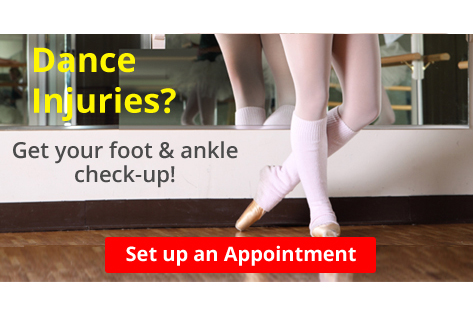August 2022
Walking and Other Tips for Elderly Foot Care
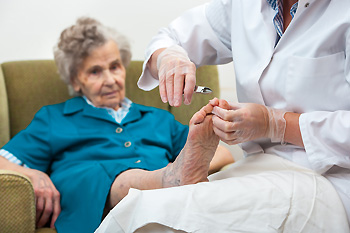
Maintaining the health of one’s feet is important for everyone, regardless of their age. However, it is especially important for senior citizens, who tend to lose their natural fat cushioning and muscle strength in the feet. There are a number of tips that seniors might consider following to look after the health of their feet. First, you could consider taking walks regularly. Although this may seem simple, walking is one of the easiest ways to strengthen and exercise the feet. Walking can give seniors the full range of motion in the feet needed to keep the feet strong and agile. As an added bonus, walking can additionally improve circulation to one’s feet, helping blood flow throughout the feet and lower legs. Second, you can regularly examine your feet. If a senior can identify any cuts, calluses, or other abnormalities early enough, they might be able to prevent a larger complication down the road. If a senior is unable to examine their own feet, a loved one or care provider might be able to perform these examinations. If you are a senior, don’t take the health of your feet for granted –see a podiatrist today.
Proper foot care is something many older adults forget to consider. If you have any concerns about your feet and ankles, contact Dr. Robert Graser from Graser Podiatry and Bunion Surgery Institute. Our doctor can provide the care you need to keep you pain-free and on your feet.
The Elderly and Their Feet
As we age we start to notice many changes in our body, but the elder population may not notice them right away. Medical conditions may prevent the elderly to take notice of their foot health right away. Poor vision is a lead contributor to not taking action for the elderly.
Common Conditions
- Neuropathy – can reduce feeling in the feet and can hide many life-threatening medical conditions.
- Reduced flexibility – prevents the ability of proper toenail trimming, and foot cleaning. If left untreated, it may lead to further medical issues.
- Foot sores – amongst the older population can be serious before they are discovered. Some of the problematic conditions they may face are:
- Gouging toenails affecting nearby toe
- Shoes that don’t fit properly
- Pressure sores
- Loss of circulation in legs & feet
- Edema & swelling of feet and ankles
Susceptible Infections
Diabetes and poor circulation can cause general loss of sensitivity over the years, turning a simple cut into a serious issue.
If you have any questions please feel free to contact our office located in Boerne, . We offer the newest diagnostic and treatment technologies for all your foot and ankle needs.
Where Are Seed Corns Found?
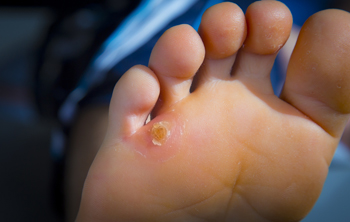
Corns can cause severe pain and discomfort. They are defined as small patches of hardened skin that develop as a result of excess friction typically from wearing shoes and socks that are too tight. There are certain medical conditions that may lead to corns. Patients who have hammertoe and bunions may find that corns develop on top of the extended joints. There are three categories of corns consisting of hard, soft, and seed corns. If you notice a corn on the bottom of your foot, it most likely is a seed corn. The medical term for this type of corn is heloma milliare and they develop due to dry skin. Other characteristics of a seed corn can include multiple corns in one area, and they may appear circular and smaller than other types of corns. Soft corns are found between the toes and remain moist from the sweat that is found there. A hard corn can develop on the side of the pinky toe or on top of the other toes from excess friction. If you have corns on your feet, please seek the expert advice of a podiatrist who can offer you the correct treatment options.
Corns can make walking very painful and should be treated immediately. If you have questions regarding your feet and ankles, contact Dr. Robert Graser of Graser Podiatry and Bunion Surgery Institute. Our doctor will treat your foot and ankle needs.
Corns: What Are They? And How Do You Get Rid of Them?
Corns are thickened areas on the skin that can become painful. They are caused by excessive pressure and friction on the skin. Corns press into the deeper layers of the skin and are usually round in shape.
Ways to Prevent Corns
There are many ways to get rid of painful corns such as:
- Wearing properly fitting shoes that have been measured by a professional
- Wearing shoes that are not sharply pointed or have high heels
- Wearing only shoes that offer support
Treating Corns
Although most corns slowly disappear when the friction or pressure stops, this isn’t always the case. Consult with your podiatrist to determine the best treatment option for your case of corns.
If you have any questions please feel free to contact our office located in Boerne, . We offer the newest diagnostic and treatment technologies for all your foot and ankle needs.
Signs of Poor Circulation in the Feet
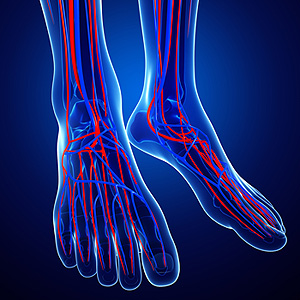
A variety of individuals across the country may exhibit poor circulation in their feet at some point in their lives. Poor circulation is essentially caused when the feet do not receive adequate blood flow. Certain individuals are more susceptible to this condition than others, such as those who have diabetes, high cholesterol, high blood pressure, or a habit of smoking cigarettes. There are a number of signs that can point to poor circulation in the feet. First, if you have poor circulation, the temperature of your feet might be manipulated. For example, your feet may feel colder than usual. Additionally, you might lose feeling in your feet, experiencing numbness of some kind. If you are suffering from poor circulation in the feet, it is possible that you might even notice hair loss around the feet area. If you discover that the skin on your feet has become significantly cracked and the toenails have become brittle, this might be another sign of poor circulation to the feet. If you are exhibiting these signs, consider consulting with a podiatrist to determine whether or not you are suffering from poor circulation. Together, you can draw up a plan to address the problem and increase blood flow to your feet.
Poor circulation is a serious condition and needs immediate medical attention. If you have any concerns with poor circulation in your feet contact Dr. Robert Graser of Graser Podiatry and Bunion Surgery Institute. Our doctor will treat your foot and ankle needs.
Poor Circulation in the Feet
Poor blood circulation in the feet and legs is can be caused by peripheral artery disease (PAD), which is the result of a buildup of plaque in the arteries.
Plaque buildup or atherosclerosis results from excess calcium and cholesterol in the bloodstream. This can restrict the amount of blood which can flow through the arteries. Poor blood circulation in the feet and legs are sometimes caused by inflammation in the blood vessels, known as vasculitis.
Causes
Lack of oxygen and oxygen from poor blood circulation restricts muscle growth and development. It can also cause:
- Muscle pain, stiffness, or weakness
- Numbness or cramping in the legs
- Skin discoloration
- Slower nail & hair growth
- Erectile dysfunction
Those who have diabetes or smoke are at greatest risk for poor circulation, as are those who are over 50. If you have poor circulation in the feet and legs it may be caused by PAD and is important to make changes to your lifestyle in order to reduce risk of getting a heart attack or stroke. Exercise and maintaining a healthy lifestyle will dramatically improve conditions.
As always, see a podiatrist as he or she will assist in finding a regimen that suits you. A podiatrist can also prescribe you any needed medication.
If you have any questions please feel free to contact our office located in Boerne, . We offer the newest diagnostic and treatment technologies for all your foot and ankle needs.
How to Choose a Running Shoe
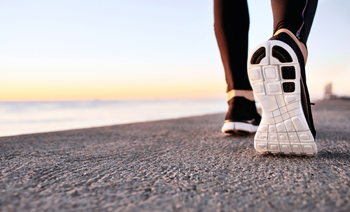
There are several types of running shoes and it can be a daunting task to choose the right type. It generally depends on the style of running that is preferred, whether it is low or high mileage. Additionally, deciding what surface to run on can determine what type of shoe is correct for you. People who enjoy running on pavements may want to choose road shoes to run in. These are adequate in absorbing shock that is helpful in minimizing injury. Trail shoes are suggested for running through soft and muddy trails because of the deep treads they have which can help to support the ankle. Many people choose to have their gait or walking style analyzed and this is important in knowing where the foot strikes the ground, and how far it rolls inward. It is suggested to wear the socks that would be worn with the shoes before purchasing them as this can have an impact on how the shoes will fit. Marathon runners will have a different type of shoe than short distance runners that will typically be more flexible. If you have questions about what type of running shoes to buy and how they can affect your feet, please schedule an appointment with a podiatrist.
If you are a runner, wearing the right running shoe is essential. For more information, contact Dr. Robert Graser from Graser Podiatry and Bunion Surgery Institute. Our doctor can provide the care you need to keep you pain-free and on your feet.
Choosing the Right Running Shoe for Your Foot Type
To increase performance and avoid the risk of injury, it is important to choose the right running shoe based on your foot type. The general design of running shoes revolves around pronation, which is how the ankle rolls from outside to inside when the foot strikes the ground.
- Neutral runners are able to choose from a wide variety of shoes, including minimalist shoes or even going barefoot.
- Runners who overpronate, or experience an over-abundance of ankle rolling, should choose shoes that provide extra motion control and stability.
- Runners who underpronate, or supinate, have feet that have high arches and lack flexibility, preventing shock absorption. They require shoes with more flexibility and cushion.
If you have any questions please feel free to contact our office located in Boerne, . We offer the newest diagnostic and treatment technologies for all your foot and ankle needs.
Choosing Baby's 1st Pair of Shoes After Walking
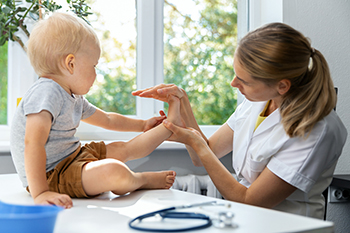
Most babies do not wear shoes until they begin to walk comfortably. As the toes grip the floor, the bones, tendons, muscles and ligaments in each foot can become stronger. It is important that the toes have enough room in the socks to move freely, and are not stretched too tight over the foot. Many people choose to have their child’s feet properly measured when purchasing their child's first pair of shoes. This is done by measuring the length and the width of each foot, which can help to determine the exact size shoe your child should wear. Shoes that fit properly have adequate room for the toes, and the heel should fit securely. If your child’s foot slips out of the shoe while walking, the next size smaller may be considered. Children’s feet grow fast, and it is beneficial to have them measured every four to six weeks. The rate the feet grow will slow down at approximately four years of age, and then generally increase one size per year until age twenty. If you would like additional information about what to look for before purchasing your child’s shoes, please confer with a podiatrist.
Making sure that your children maintain good foot health is very important as they grow. If you have any questions, contact Dr. Robert Graser of Graser Podiatry and Bunion Surgery Institute. Our doctor can provide the care you need to keep you pain-free and on your feet.
Keeping Children's Feet Healthy
Having healthy feet during childhood can help prevent medical problems later in life, namely in the back and legs. As children grow, their feet require different types of care. Here are some things to consider...
Although babies do not walk yet, it is still very important to take care of their feet.
Avoid putting tight shoes or socks on his or her feet.
Allow the baby to stretch and kick his or her feet to feel comfortable.
As a toddler, kids are now on the move and begin to develop differently. At this age, toddlers are getting a feel for walking, so don’t be alarmed if your toddler is unsteady or ‘walks funny’.
As your child gets older, it is important to teach them how to take care of their feet.
Show them proper hygiene to prevent infections such as fungus.
Be watchful for any pain or injury.
Have all injuries checked by a doctor as soon as possible.
Comfortable, protective shoes should always be worn, especially at play.
If you have any questions please feel free to contact our office located in Boerne, . We offer the newest diagnostic and treatment technologies for all your foot and ankle needs.
Blog Archives
- July 2024
- June 2024
- May 2024
- April 2024
- March 2024
- February 2024
- January 2024
- December 2023
- November 2023
- October 2023
- September 2023
- August 2023
- July 2023
- June 2023
- May 2023
- April 2023
- March 2023
- February 2023
- January 2023
- December 2022
- November 2022
- October 2022
- September 2022
- August 2022
- July 2022
- June 2022
- May 2022
- April 2022
- March 2022
- February 2022
- January 2022
- December 2021
- November 2021
- October 2021
- September 2021
- August 2021
- July 2021
- June 2021
- May 2021
- April 2021
- March 2021
- February 2021
- January 2021
- December 2020
- November 2020
- October 2020
- September 2020
- August 2020
- July 2020
- June 2020
- May 2020
- April 2020
- March 2020
- February 2020
- January 2020
- December 2019
- November 2019
- October 2019
- September 2019
- August 2019
- July 2019
- June 2019
- May 2019
- April 2019
- March 2019
- February 2019
- January 2019
- December 2018
- November 2018
- October 2018
- September 2018
- August 2018
- July 2018
- June 2018
- May 2018





